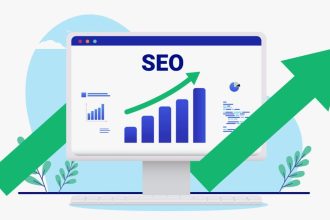By [Your Name/Journalist Name]
In an increasingly digital world, the virtual storefront has become the primary gateway for consumers to engage with businesses. Yet, a significant portion of this global audience often finds itself facing invisible barriers, preventing access to essential services and products. This isn’t just an ethical oversight; it’s a profound business challenge with substantial legal and financial implications. Proactively addressing website accessibility is no longer merely a best practice; it has undeniably transformed into an imperative for any forward-thinking enterprise.
The year 2020 served as a pivotal moment, accelerating the digital transformation across industries and simultaneously amplifying the conversation around digital inclusion. As more of our lives shifted online, the stark reality of inaccessible websites became undeniably clear for millions. Businesses that hesitated in adapting their digital platforms found themselves not only excluding potential customers but also navigating a rapidly evolving legal landscape fraught with potential lawsuits. Embracing accessibility now means future-proofing your operations, expanding your market reach, and significantly enhancing your brand’s reputation in a competitive global marketplace.
Key Milestones & Standards in Website Accessibility
Understanding the foundational elements of digital inclusion is critical for businesses aiming for compliance and market expansion. Below is a summary of key information regarding global accessibility standards and legal frameworks;
| Category | Description | Reference Link |
|---|---|---|
| WCAG (Web Content Accessibility Guidelines) | An internationally recognized set of guidelines for making web content more accessible to people with disabilities. Developed by the World Wide Web Consortium (W3C), WCAG provides comprehensive recommendations across various success levels (A, AA, AAA). Version 2.1 is widely adopted globally. | W3C WCAG 2.1 Official |
| Americans with Disabilities Act (ADA) | A civil rights law prohibiting discrimination based on disability. While initially focused on physical spaces, court interpretations and Department of Justice guidance have increasingly applied ADA Title III to websites and digital services, making web accessibility a legal requirement in the United States. | ADA.gov |
| Section 508 of the Rehabilitation Act | Requires federal agencies and those receiving federal funding to make their electronic and information technology accessible to people with disabilities. It often references WCAG 2.0 Level AA as its standard. | Section508.gov |
| European Accessibility Act (EAA) | A directive from the European Union aiming to improve the functioning of the internal market by removing barriers created by divergent accessibility requirements. It mandates accessibility for a range of products and services, including e-commerce websites, by 2025. | European Commission ‒ EAA |
| Benefits of Accessibility | Beyond legal compliance, accessible websites offer expanded market reach, improved SEO, enhanced brand reputation, better user experience for all, and reduced legal risks. | W3C ― Benefits |
The Unseen Barrier: Why Inaccessibility Costs More Than You Think
Consider the staggering fact: over one billion people worldwide live with some form of disability. This represents an enormous, often underserved market segment with significant purchasing power. By failing to ensure your website is accessible, you’re effectively putting up a “closed” sign to these potential customers. This isn’t merely about lost sales; it’s about reputational damage and the very real threat of litigation. Lawsuits citing violations of the Americans with Disabilities Act (ADA) regarding website accessibility have skyrocketed, turning a once niche concern into a mainstream legal headache for countless companies, from startups to Fortune 500 giants.
The cost of non-compliance can be devastating. Beyond the direct legal fees and settlement costs, businesses face invaluable harm to their brand image. A company perceived as exclusionary or indifferent to the needs of its diverse customer base risks alienating a much broader audience. Conversely, businesses championing accessibility are increasingly viewed as ethical, inclusive, and forward-thinking leaders. As industry expert Dr. Eliza Thorne, a leading advocate for digital inclusion, aptly puts it, “Accessibility isn’t charity; it’s smart business. It reflects a commitment to universal design that ultimately benefits everyone, not just those with disabilities.”
Beyond Compliance: Unlocking a World of Opportunity
Imagine your website as a beautifully designed physical store. If the entrance has steps but no ramp, you’re immediately excluding wheelchair users. If the signs are only in tiny print, you’re alienating those with visual impairments. Digital accessibility removes these virtual steps and unreadable signs, creating a welcoming environment for every visitor. By integrating insights from user experience (UX) research focused on diverse abilities, businesses can craft digital experiences that are not only compliant but also remarkably effective in converting visitors into loyal customers. This holistic approach ensures that your digital presence is robust, inclusive, and future-proof.
Navigating the Path to Digital Inclusion
Achieving comprehensive website accessibility might seem daunting, but the journey is entirely manageable with the right strategy and tools. It typically begins with a thorough accessibility audit, often conducted by specialized firms, identifying specific areas of non-compliance against standards like WCAG 2.1 Level AA. Following this assessment, a phased remediation plan is developed, addressing issues from keyboard navigation and screen reader compatibility to color contrast and captioning for multimedia content. Implementing robust content management system (CMS) practices and regular employee training are also incredibly effective in maintaining accessibility standards over time.
The future of digital accessibility is bright, driven by ongoing technological advancements and a growing global consciousness. Artificial intelligence (AI) is already playing a transformative role, offering automated testing tools, real-time captioning, and even personalized accessibility adjustments for users. Companies that proactively invest in these solutions are not just avoiding legal pitfalls; they are actively shaping a more inclusive digital future. They are building platforms that resonate with a broader audience, fostering trust, and ultimately driving sustainable growth in an interconnected world. The time to act on website accessibility is now, ensuring your business is ready for tomorrow’s challenges and opportunities.






